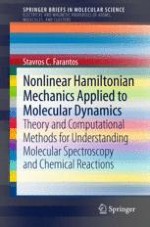This brief presents numerical methods for describing and calculating invariant phase space structures, as well as solving the classical and quantum equations of motion for polyatomic molecules. Examples covered include simple model systems to realistic cases of molecules spectroscopically studied.
Vibrationally excited and reacting molecules are nonlinear dynamical systems, and thus, nonlinear mechanics is the proper theory to elucidate molecular dynamics by investigating invariant structures in phase space. Intramolecular energy transfer, and the breaking and forming of a chemical bond have now found a rigorous explanation by studying phase space structures.
